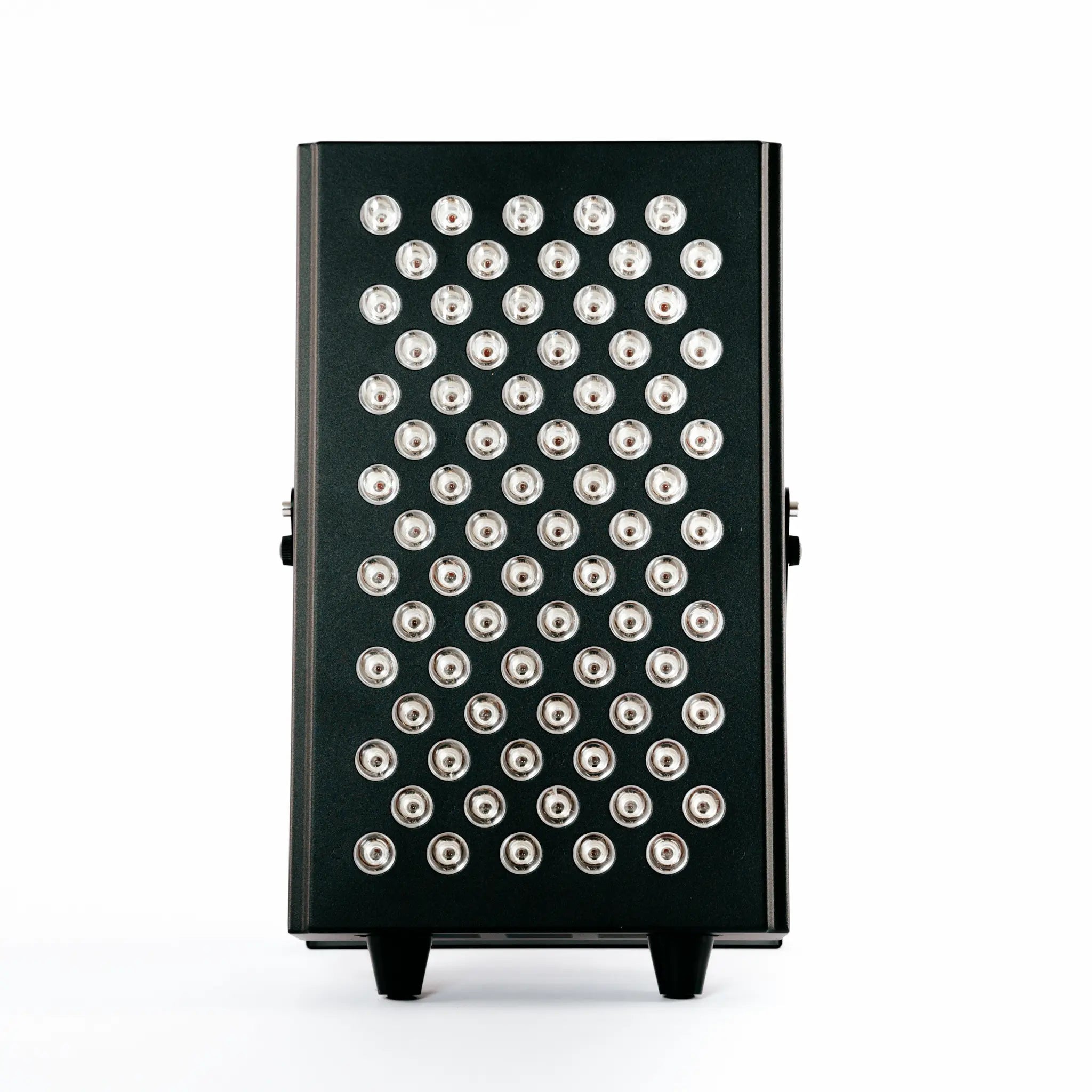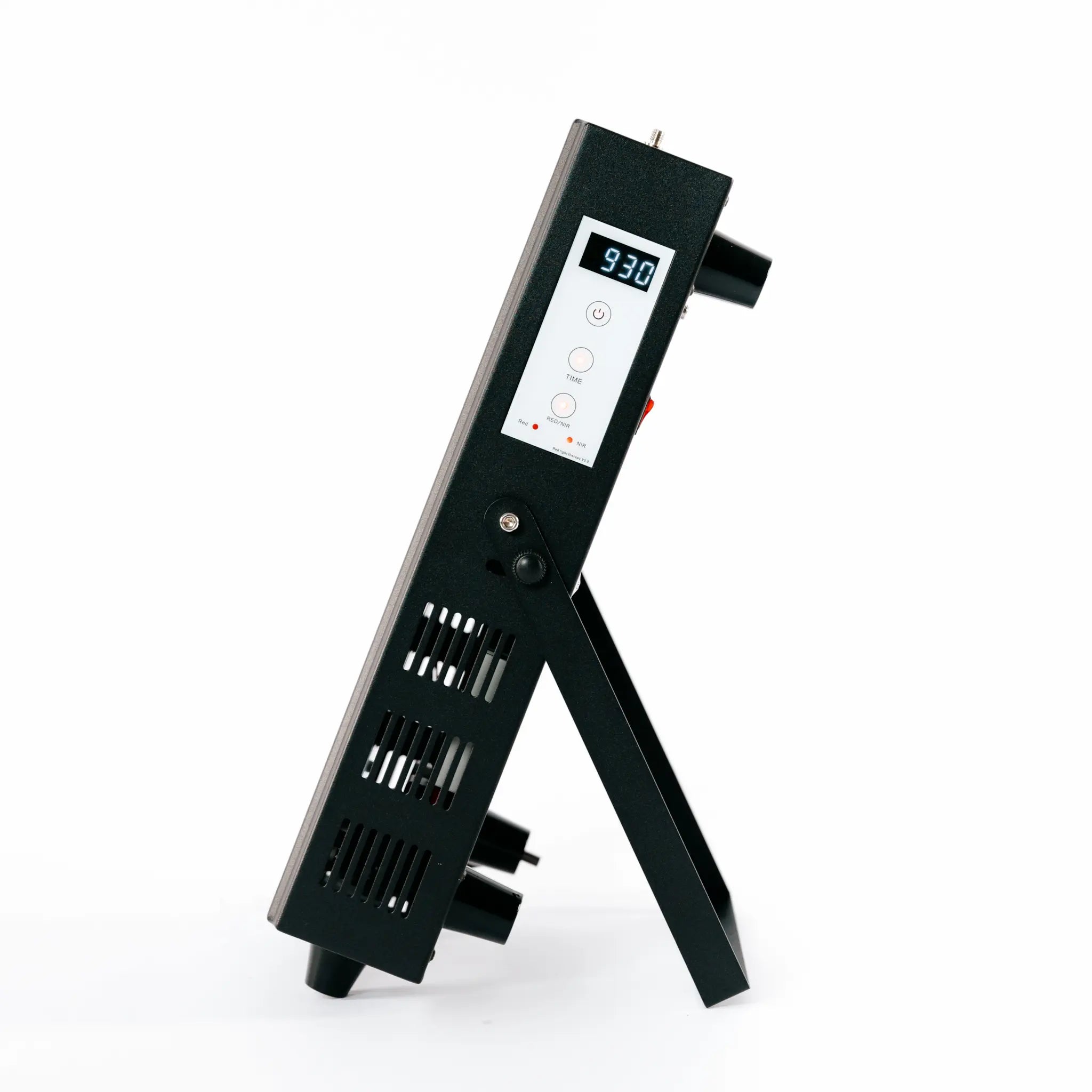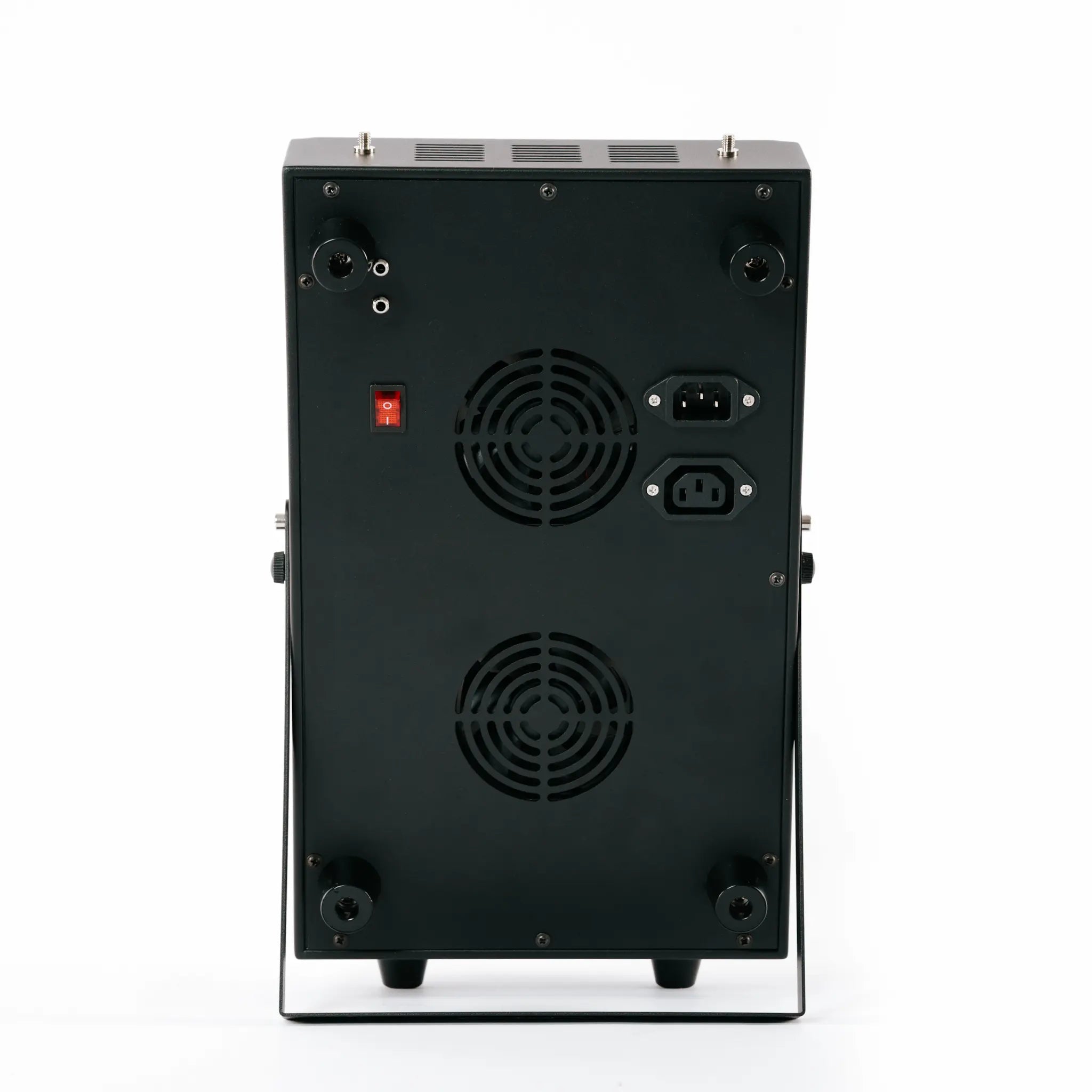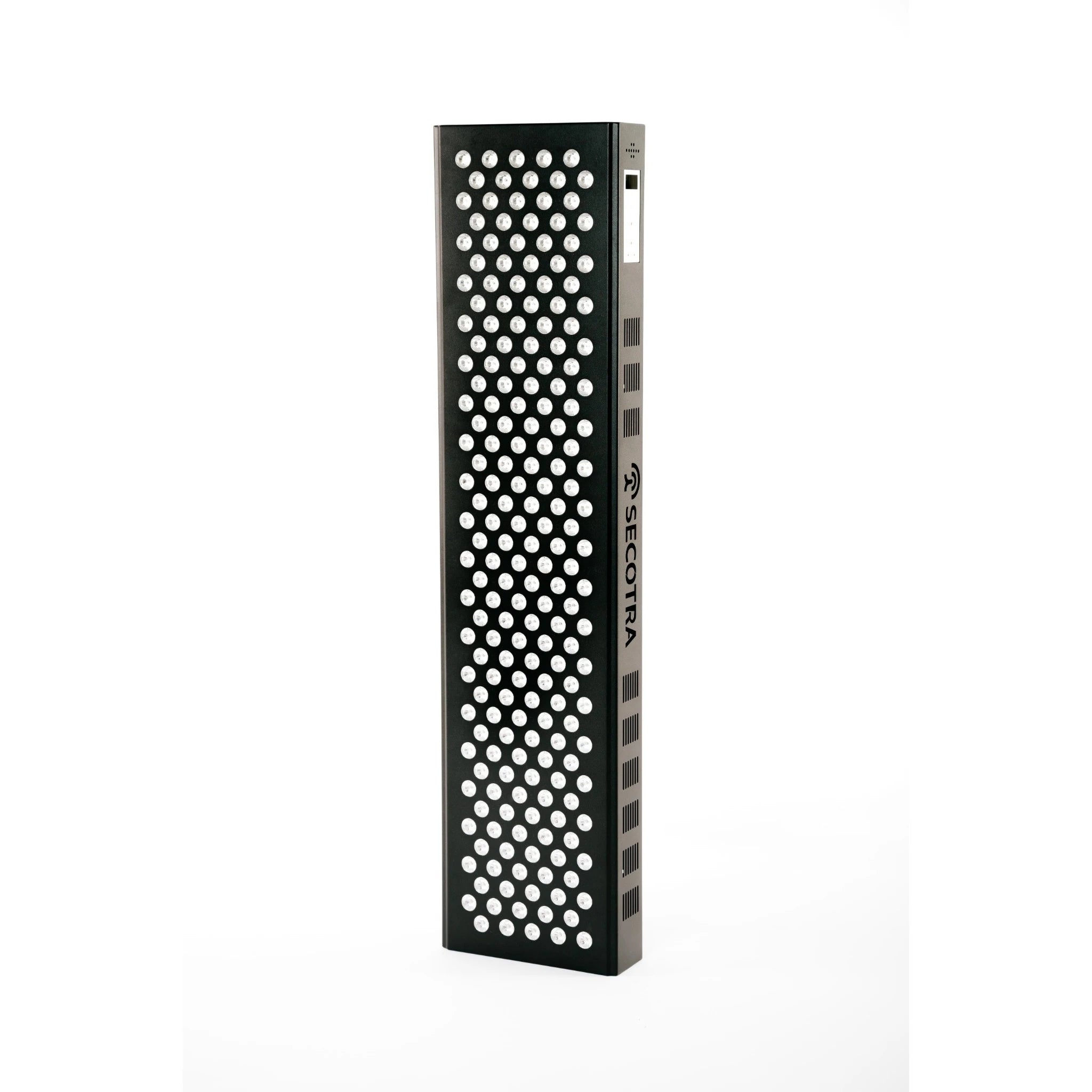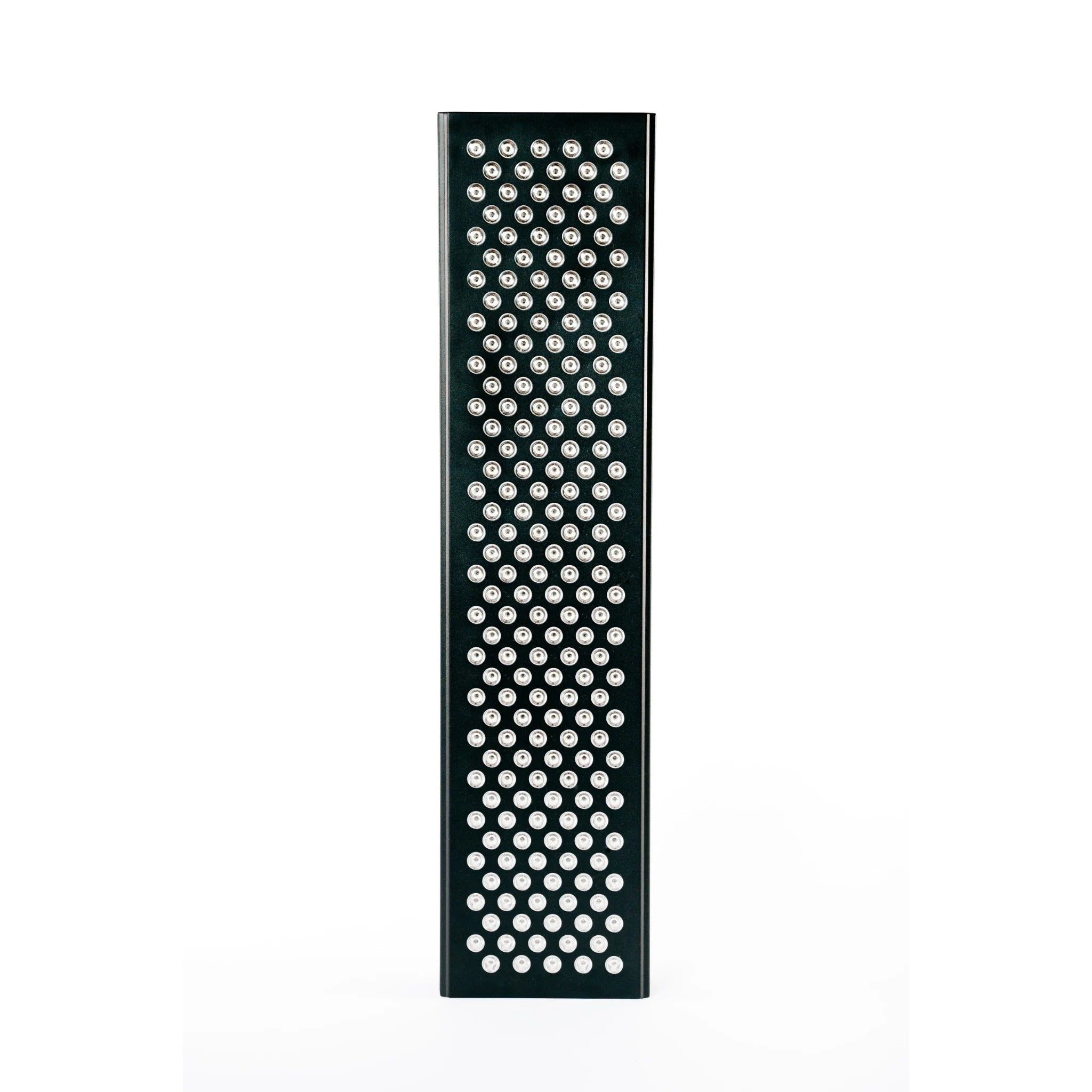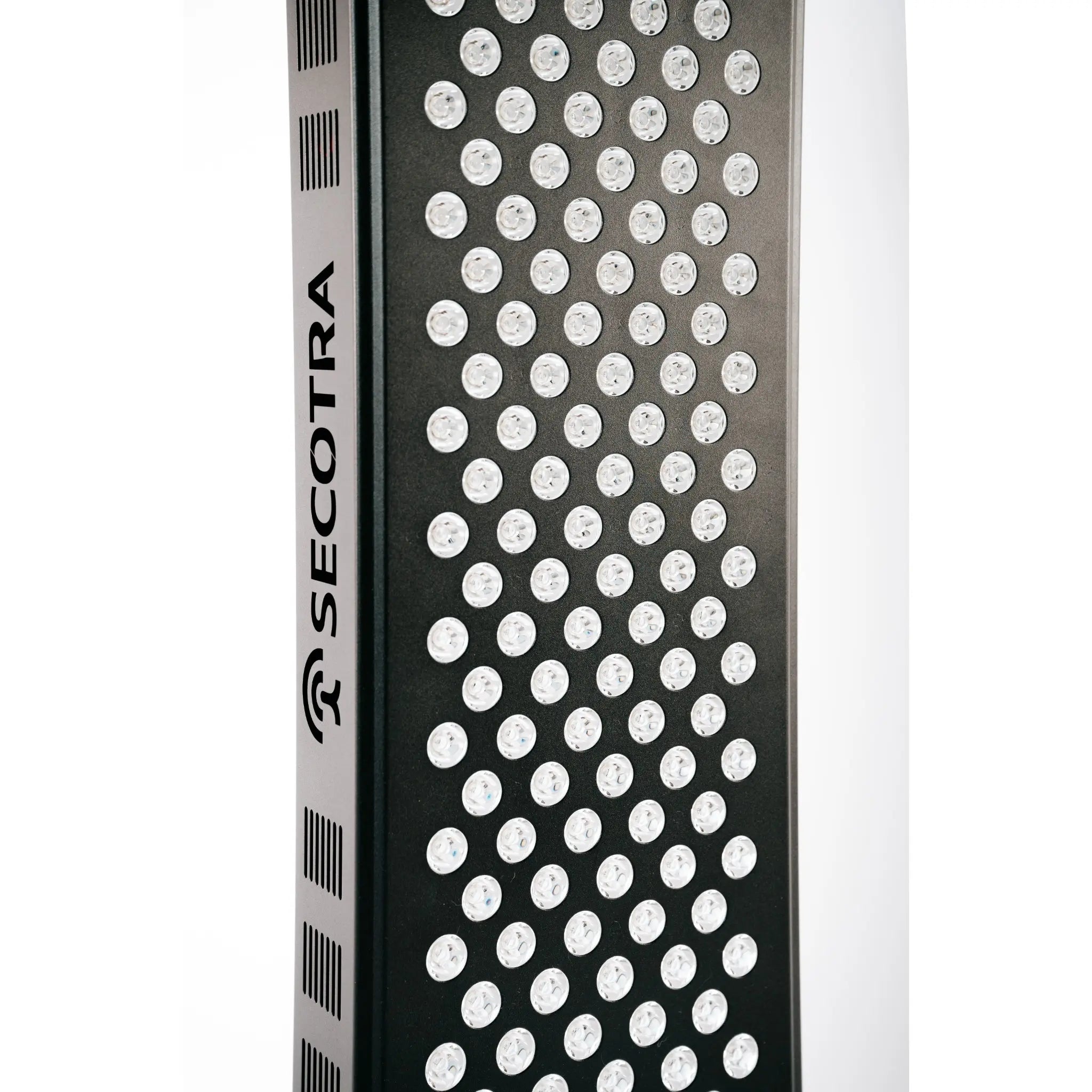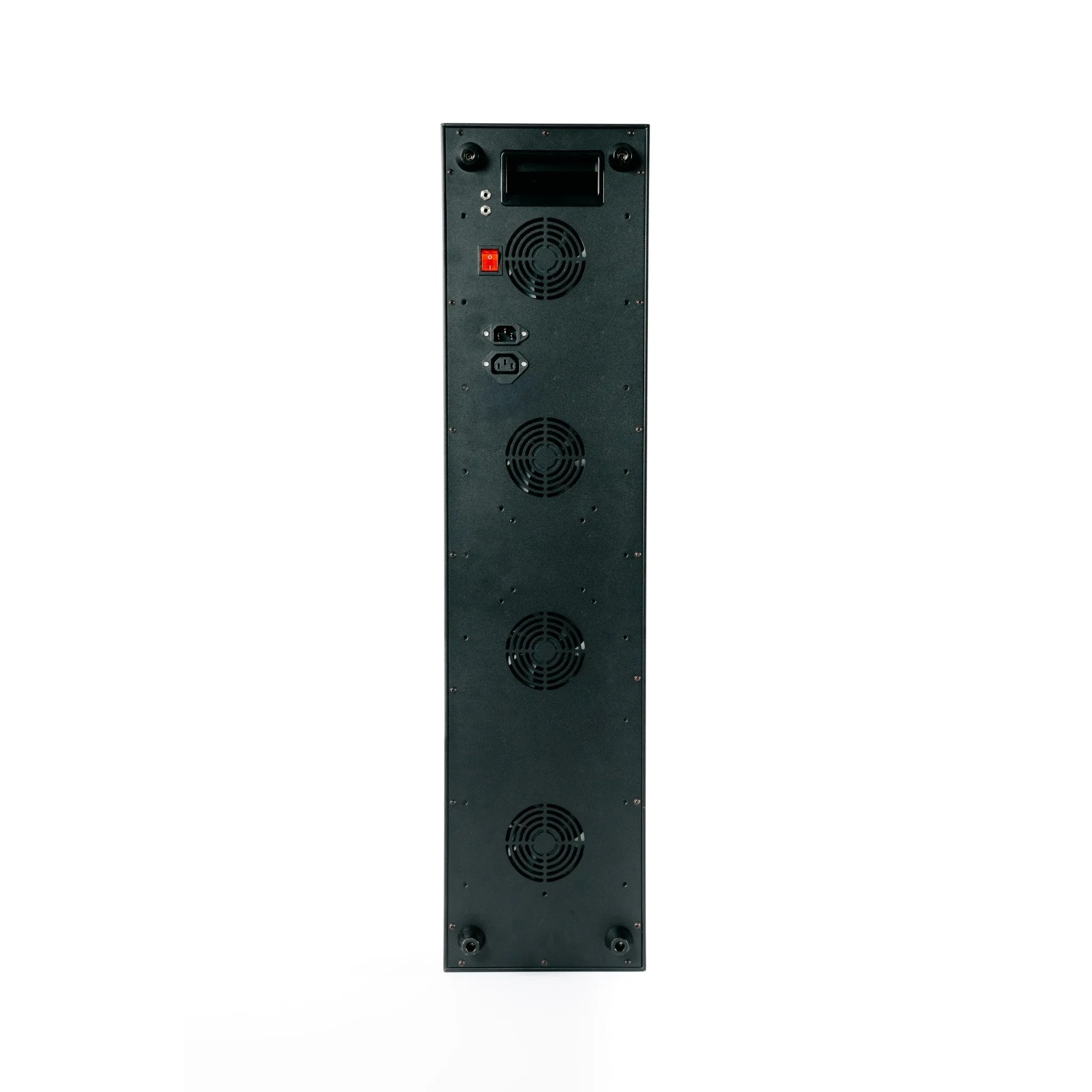TrueRatio Technology™
The Science-Backed Solution to Wavelength Balance
Finally, red light therapy done right.
While most brands add token amounts of extra wavelengths as marketing gimmicks, TrueRatio Technology™ takes a different approach: we deliver 2-3x more therapeutic power than conventional panels. We don't just sprinkle in a few LEDs here and there—we've engineered the optimal balance between the six wavelengths that matter most—630, 660, and 670 nm red light paired with 810, 830, and 850 nm near-infrared—with enough power in each to deliver systemic effects throughout your entire body.
Unprecedented Power Output
Our independent testing revealed something remarkable: our panels produce the same therapeutic irradiance at 3 feet away as most competitors do at just 6 inches. This means you can achieve powerful systemic effects across your entire body with a smaller panel, or create comprehensive full-body treatment with just one or two panels positioned comfortably away from your body.
Why This Changes Everything:
- True systemic coverage. Our 2-3x power advantage means smaller panels can treat your entire body, not just localized areas—our smallest panel treats face AND neck, not just face alone
- Comfortable treatment distance. Achieve maximum therapeutic benefit from 3 feet away—no need to position panels inches from your skin like our customers actually want
- Larger treatment areas with smaller panels. Because our panels are more powerful and biologically more efficient, you can use a smaller panel to treat larger areas of your body
- Synergy over brightness. We focus on wavelength balance that generates the highest level of synergy, not just the brightest light
- Safety through precision. Correct ratios and power output are safer and more effective than raw irradiance without balance
The Power Management Difference
Most red light companies fall into two traps: either they add token amounts of extra wavelengths—sometimes as little as 4-7% of the most effective wavelengths—or they simply chase brightness without regard for therapeutic balance. We took a completely different approach: delivering 2-3x more power from each essential wavelength while maintaining optimal synergy between red and near-infrared light.
We understand what customers actually want: the comfort and convenience of sitting further away from their panels while still getting powerful therapeutic results. Most people don't want to sit 6 inches from a panel—they want to relax comfortably during treatment.
TrueRatio Technology™ represents thousands of hours of research into not just which wavelengths work, but how much power each one needs and how they work together at comfortable therapeutic distances. Instead of requiring you to position panels inches from your body or use multiple large panels, our superior power output means you can achieve systemic effects comfortably and efficiently.
Understanding Systemic Red Light Therapy
Red light therapy isn't just about treating one spot—when delivered with sufficient power and proper wavelengths, it creates systemic effects throughout your body. Research shows that red and near-infrared light penetrates tissue to stimulate cellular energy production (ATP), reduce inflammation, and enhance circulation. These benefits don't stay localized—they cascade throughout your entire system.
The systemic effects include:
- Enhanced cellular energy production and mitochondrial function throughout the body
- Improved circulation and blood flow that benefits multiple organ systems
- Reduced systemic inflammation markers
- Stimulated collagen production and tissue repair processes
- Enhanced recovery and regeneration at the cellular level
Most panels lack the power to create these systemic effects—they only provide localized benefits. Our 2-3x power advantage means you're not just treating skin deep; you're delivering therapeutic photons that create whole-body biological responses.
Real Therapeutic Power at Real Distances
The result? You're getting substantially more therapeutic power from each of the six essential wavelengths than any competitor delivers—at distances that actually work for full-body treatment. Whether you're targeting skin rejuvenation, muscle recovery, or overall wellness, TrueRatio Technology™ provides the wavelength power and therapeutic reach necessary for real systemic results.
TrueRatio Technology™: Because your time and health deserve wavelength synergy with the power to work—not marketing gimmicks that require you to sit uncomfortably close for minimal effect.
The Highest Wavelength Power in the Industry
Delivering 2-3x more therapeutic power at comfortable treatment distances
This isn't about having the brightest light or the most wavelengths—it's about having enough power in the right ones, in the right ratios, at distances that allow for true systemic treatment. While competitors require positioning at 6 inches for minimal effect, our panels deliver the same therapeutic power at 3 feet, transforming how red light therapy can fit into your life.
BiDiode Precision LED™
Dual-Chip Engineering, Superior Irradiance Evenness
More even distribution. Double the surface area contact.
BiDiode Precision LED™ delivers what single-chip technology simply can't: dramatically superior irradiance evenness across your entire treatment area. Each LED houses both red and near-infrared chips bonded to a premium aluminum substrate, creating more even distribution while providing double the surface area contact of light through this advanced process.
What This Means for Your Therapy:
- More even distribution. No hot spots, no dead zones—just consistent therapeutic light everywhere
- Double the surface area contact. More of your skin receives optimal light exposure
- Reliable performance. Professional-grade thermal management maintains power output session after session
Because when you're investing in your health, uneven coverage isn't an option.
The Engineering Behind Superior Irradiance Evenness
Most companies use single-chip LEDs because they're cheaper. We use BiDiode Precision LED™ because they deliver dramatically better results.
Each BiDiode houses both red and near-infrared semiconductor chips on a single, high-performance aluminum substrate. This isn't just about cramming more light into less space—it's about achieving twice the irradiance evenness compared to single-chip technology.
The Irradiance Advantage: When you have both wavelengths emanating from the same point source, you get more even distribution of each wavelength across your treatment area. Instead of red light clustered in some spots and near-infrared in others, BiDiode Precision LED™ ensures that every square inch receives the optimal ratio of both wavelength ranges.
Double the Surface Area Contact: This dual-chip process doesn't just improve evenness—it doubles the surface area contact of light with your skin. You're getting substantially more red and near-infrared photons reaching more of your treatment area, distributed far more uniformly than single-chip arrays can achieve.
The aluminum substrate difference: Unlike cheaper plastic housings, our aluminum base acts as a heat sink, preventing the thermal degradation that kills LED performance over time. While there's natural variance in any LED manufacturing, we maintain strict quality control and monitor every batch to ensure you get the wavelengths and power we promise.
This is what LED engineering looks like when performance matters more than profit margins.
ForgeFrame Modular Architecture™
Built to Last, Designed to Grow
Start anywhere. Expand everywhere.
ForgeFrame Modular Architecture™ turns red light therapy into a true long-term investment. Our precision laser-cut steel chassis features a forged gunnel on the edges—where the steel is compressed and shrunk to provide high rigidity across the entire panel chassis. Combined with analog-style headphone connectors that make panels easy to add together, this creates a system that grows with your needs and stands up to daily use.
Start Small, Think Big:
- Simple expansion. Analog-style headphone connectors make adding panels effortless—no complex adapters
- Forged steel rigidity. The compressed and shrunk steel gunnel edges provide superior structural integrity
- Professional durability. One-piece steel construction with snap-together design that won't flex, crack, or fade
Why settle for a device when you can build a system built like a fortress?
Modular by Design, Professional by Nature
Most red light panels are designed as single units—buy what you need now, replace everything if you want more coverage later. ForgeFrame Modular Architecture™ breaks that cycle with superior engineering and effortless expandability.
The Forged Steel Difference: Our precision laser-cut steel chassis features a forged gunnel on the edges where the steel is compressed and shrunk, providing high rigidity across the entire panel chassis. This forging process creates structural integrity that plastic and standard aluminum frames simply cannot match. The premium matte black finish isn't just attractive—it's a durable coating that resists scratches, fingerprints, and daily wear.
Connect and Expand: The analog-style headphone connectors make panels easy to add together without adapters, software, or complications. Each panel connects with a simple plug, and our snap-together design with easy-access tabs and studs lets you securely join as many panels as your power supply supports.
Built for Life: This isn't planned obsolescence—it's planned expansion. Start with one panel for targeted therapy, add a second for larger treatment areas, or build a full-body array. The forged gunnel construction ensures each panel maintains its structural integrity whether used alone or as part of a larger system.
ForgeFrame Modular Architecture™: Because your wellness journey shouldn't be limited by inferior construction or complicated connections
SignalShield Chassis™
Clean Power, Clear Mind
Protecting your bioelectrical balance during every session.
SignalShield Chassis™ addresses what other manufacturers ignore: the electromagnetic noise that can interfere with your body's natural electrical systems. Our all-metal backing plate encloses the entire chassis—no plastic, no cheap construction—just solid engineering paired with our extremely stable driver system for complete electromagnetic harmony.
Why EMF Shielding Matters:
- Full metal construction. All-metal backing plate with precision laser-cut, folded, and TIG-welded steel front chassis
- Complete grounding. Unlike panels with 2-prong connectors, we ensure full grounding so any potential distortion goes through the ground
- System-wide stability. It's not just individual parts—it's the entire system working together for clean power delivery
Clean light therapy starts with clean electrical design and robust construction.
Engineering Electromagnetic Harmony Through Superior Construction
Your body runs on bioelectricity—from nerve signals to cellular communication. SignalShield Chassis™ recognizes that red light therapy should enhance, not interfere with, these natural electrical processes through robust, fully sealed construction.
All-Metal Construction: We use an all-metal backing plate that encloses the entire chassis—no plastic, no cheap construction, just solid engineering. The SignalShield Chassis™ is made from one piece except for the all-metal one-piece backing plate, but the entire front of the chassis is precision laser-cut, folded, and welded all from one piece of steel. This creates a robust, fully sealed chassis that provides superior electromagnetic shielding.
Complete Grounding System: Unlike other panels that use 2-prong connectors, we ensure that you have full grounding on your panel, allowing any potential electrical distortion to go through the ground rather than radiating into your therapy environment. This proper grounding is essential for clean power delivery and EMF reduction.
System Integration: We pair our SignalShield Chassis™ with our extremely stable driver system because it's not just about the individual parts—it's about the entire system working together. The combination of sealed metal construction, proper grounding, and stable electronics creates an electromagnetic environment that supports, rather than interferes with, your body's natural bioelectrical processes.
Who Benefits Most: If you're sensitive to electrical fields, work in electrically noisy environments, or simply prefer the cleanest possible therapy experience, SignalShield Chassis™ provides measurable EMF reduction through superior construction and complete system integration.
Because true wellness considers both the light you receive and the electromagnetic environment that delivers it.
ZeroFlicker Engine™
Steady Light, Steady Results
No pulsing. No strobing. Pure, consistent light.
ZeroFlicker Engine™ eliminates the hidden enemy of effective red light therapy: electrical flicker and pulsing. While your eyes might not notice it, invisible LED strobing can cause eye strain, nervous system stress, and reduced therapeutic effectiveness. We're all about no pulsing—our custom driver electronics deliver perfectly stable, continuous light.
The Difference You'll Feel:
- No pulsing whatsoever. Completely steady light delivery without any interruption
- Better absorption. Continuous light means consistent cellular uptake
- Nervous system calm. No invisible strobing to trigger stress responses
Because the best therapy happens when your body receives pure, uninterrupted light.
The Flicker-Free Advantage
Most LED panels use simple PWM (pulse-width modulation) drivers that rapidly turn LEDs on and off hundreds or thousands of times per second. While this saves money, it creates invisible flicker that can:
- Cause eye strain and headaches during sessions
- Trigger stress responses in sensitive individuals
- Reduce the consistency of light absorption by cells
- Create electrical noise that interferes with the therapy environment
ZeroFlicker Engine™ Difference: Our custom driver electronics use advanced constant-current technology that eliminates PWM flicker entirely. The result is truly steady, clean light delivery that allows both your eyes and cells to receive consistent photons without interruption.
Clinical Relevance: Research suggests that steady light sources provide more consistent photobiomodulation effects compared to pulsed sources. By eliminating flicker, we ensure that your cells receive the intended dose of photons for optimal therapeutic response.
User Experience: The difference is immediately noticeable. Sessions feel more relaxing, there's no eye strain, and many users report better sleep after evening sessions—likely due to reduced nervous system activation from invisible flicker.
ZeroFlicker Engine™: Because steady progress requires steady light.
SilentFlow Thermal Management™
Cool Performance, Quiet Operation
Less fans, less noise. More passive cooling.
SilentFlow Thermal Management™ solves thermal challenges through superior engineering, not more fans. Our device is designed with less fans for less noise—we rely on more passive cooling by employing large one-piece heat sinks that cover the entire inside of the device. This allows us to pull heat from every LED deep into the large one-piece heat sink, creating maximum passive cooling with minimal noise.
What This Delivers:
- Less fans, less noise. Engineering reduces fan requirements through superior passive design
- Maximum heat dissipation. Large one-piece heat sinks handle the thermal load passively
- Steady, quiet operation. Fans run at a steady rate with minimal impact
Because superior thermal engineering eliminates the need for noisy solutions.
Thermal Engineering Through Large One-Piece Heat Sinks
LED performance is directly tied to temperature. As LEDs heat up, their light output decreases and their lifespan shortens. Most manufacturers either ignore this (leading to degraded performance) or use multiple loud fans (ruining the therapy experience). SilentFlow takes a different approach: superior passive cooling design.
Large One-Piece Heat Sink Design: We use large one-piece heat sinks which allow us to cover the entire inside of the device with massive passive cooling. This design lets us pull heat from every LED deep into the large one-piece heat sink, creating superior thermal dissipation without relying on active cooling.
Minimized Fan Requirements: Our device is designed with less fans for less noise—we rely on more passive cooling. Because of our passive cooling design, we use fewer fans to keep our device cool. Our fans run at a steady rate but have been minimized because the large heat sinks handle most of the thermal load.
Performance Benefits: By maintaining optimal LED temperatures through large-scale passive cooling, SilentFlow ensures that your panels deliver their rated light output throughout each session and maintain that performance over years of use. Cool-running LEDs can last 50,000+ hours versus 10,000-20,000 hours for overheated units.
User Experience: The result is therapy sessions that maintain their meditative quality. Minimal fan noise means nothing to interrupt your relaxation, your meditation or your recovery time—just the gentle sound of engineering done right.
SilentFlow Thermal Management™: Because peak performance should come from superior engineering, not louder fans.



